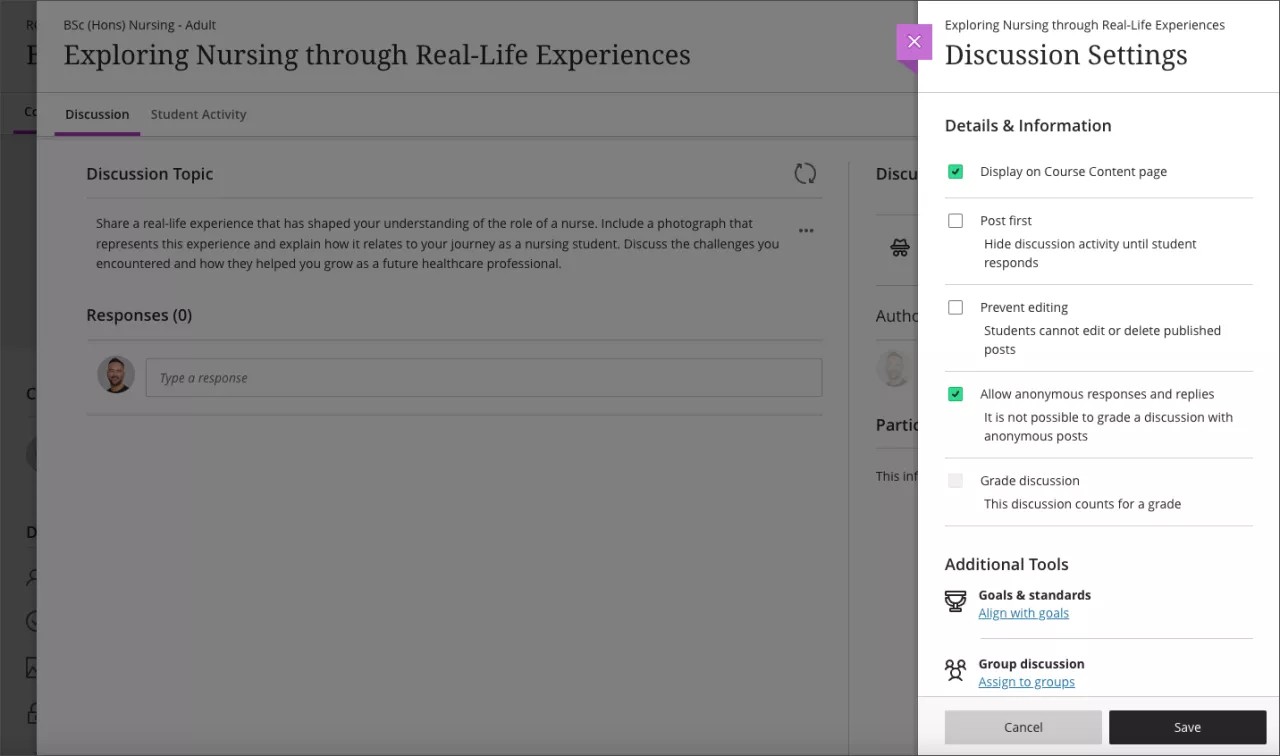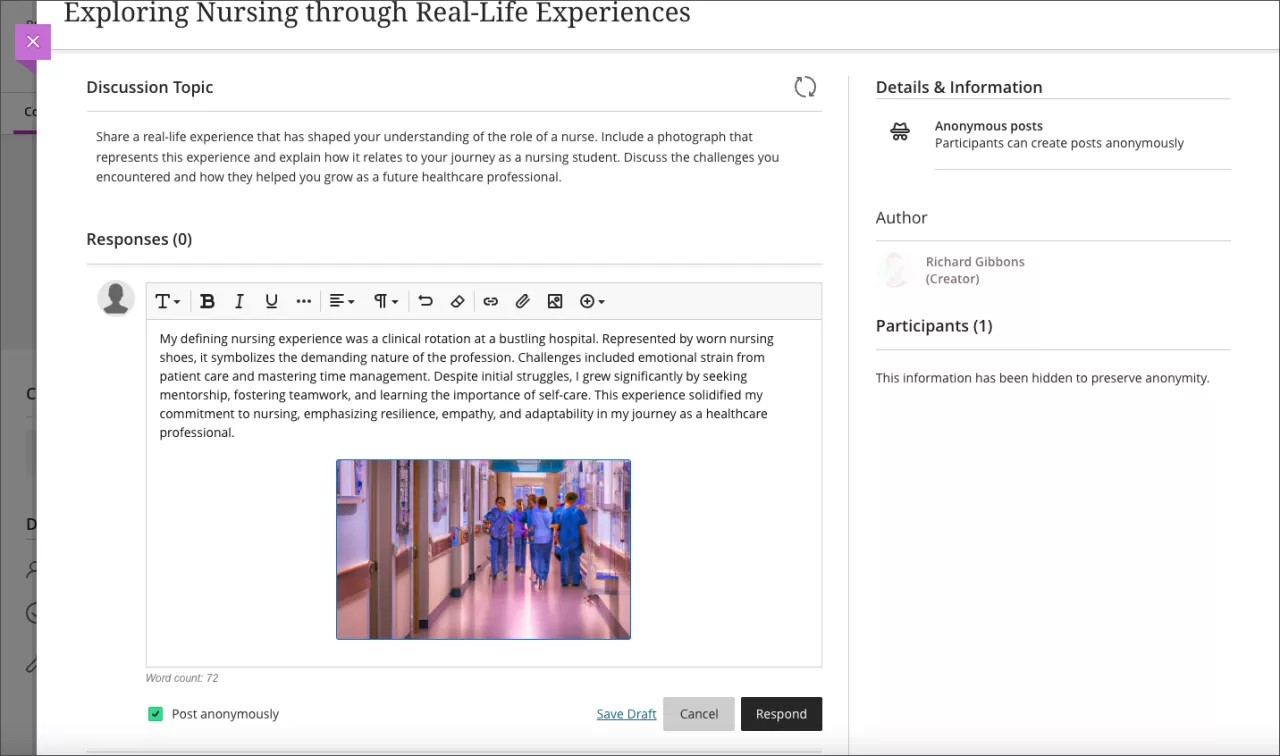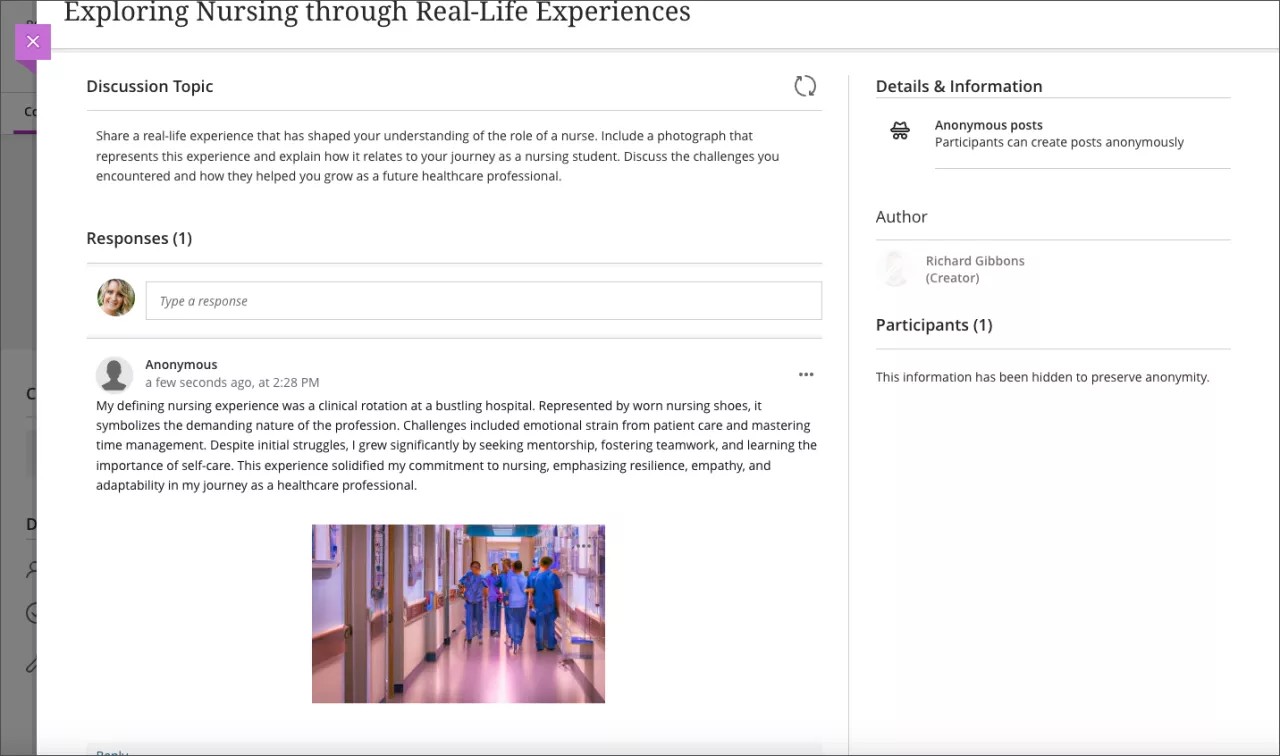April 2024 Release Overview
This post provides a summary of the upcoming changes including those features which we have highlighted due to their impact. For more in depth technical detail additional details are available on the release page.
- Default question points value changed from 10 to 1
- Duplicate questions in Assessments, Forms, and Question Banks
- Likert answer options expanded to include 4 and 6
- Auto-submitted indicator in attempt logs
- Overall grade information added to gradebook download
- Long names visible and sorting controls for the Student Activity report for assessments on small devices and mobile app
- Self-enrolment group improvements
- Individual date adjustments from Batch Edit
- Student feedback remains visible to students regardless of release condition settings
- Anonymous posts for Discussions
- Calculations changed from using BigDecimal to BigFraction
- Persistent navigation for Learning Modules
Default question points value changed from 10 to 1
Manually adjusting the point value for questions can be time-consuming and error prone. With that in mind, we are changing the default point value from 10 to 1. Moving forward, any newly created questions will have a default point value of 1. This change helps reduce the need for manual adjustments.
Anonymous posts for Discussions
Discussions play a pivotal role in nurturing peer-to-peer interaction and critical thinking. Students need to feel free to express their ideas and opinions without fear of judgement. To support this, we’ve added an option for instructors to allow anonymous posts in ungraded discussions. This feature provides flexibility for instructors. They can toggle anonymity on or off as the discussion progresses. Any existing anonymous posts keep their anonymity. Further information detailing anonymous discussions can be found here.
Image 1. Setting to turn on anonymous posts
Image 2. A student making an anonymous post
Image 3. An anonymous post in a discussion
Calculations changed from using BigDecimal to BigFraction
Instructors need a gradebook that supports diverse grading scenarios. We are changing the software library used to perform calculations in calculated columns and the overall course grade.
Example: A course contains 3 assignments worth 22 points each. The student scores 13/22 on the first assignment, 14/22 on the second assignment, and 15/22 on the third assignment. An instructor creates a calculated column to calculate the average of these assignments.
Using the new software library, BigFraction, the average will calculate as 14/22.
With the former software library, BigDecimal, the average would incorrectly calculate to 13.99/22. The new software library ensures calculations compute as expected.






